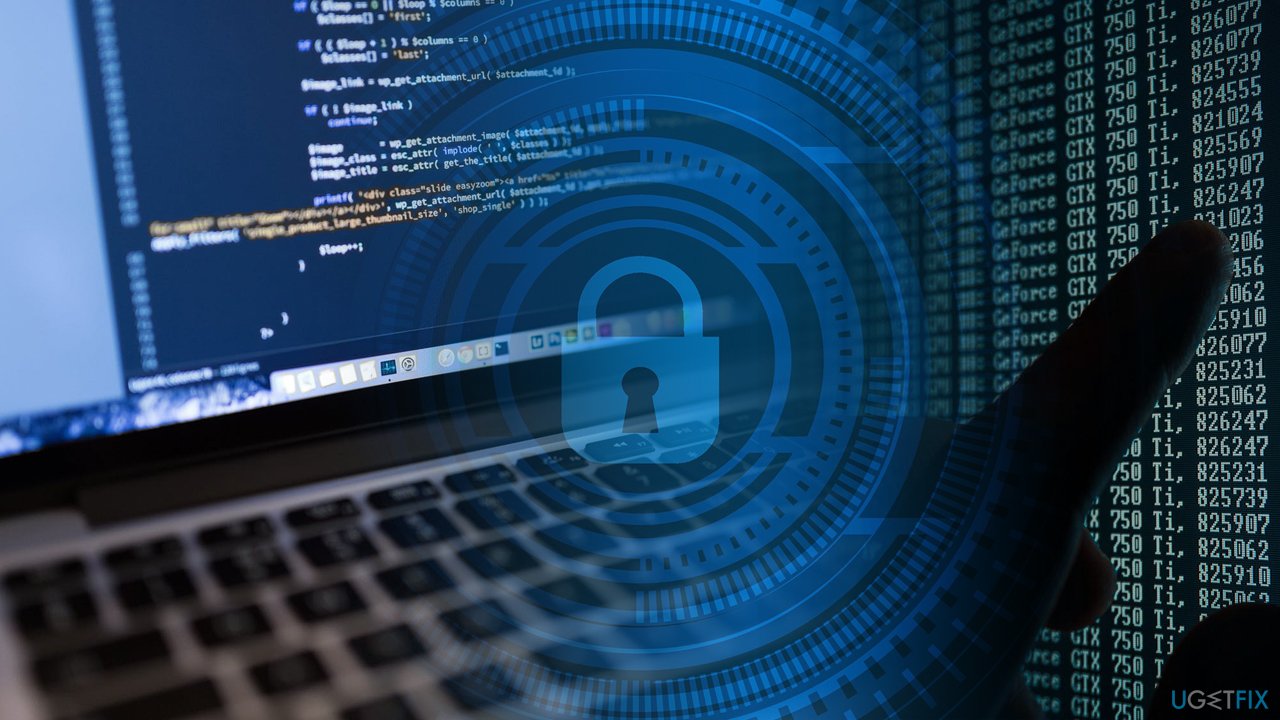What is data backup and recovery and why is it important?

In technical terms, data backup is an implementation of processes and technologies of making copies of valuable files in particular time intervals. This process can prevent a variety of unexpected course of events that would result in permanent data loss – cyber-attacks, human errors, natural disasters, and other reasons.
Modern society greatly relies on various information, and it is vastly digitalized – stored on servers, hard drives, NAS, and other types of storage devices. Data now became extremely important, and its retention is one of the most crucial aspects of any business. While some companies still store essential documents as hard copies, most shifted to digital backups and disaster recovery practices – these advancements ensure that businesses will not suffer financial losses or begin losing market share.
Corporate data is invaluable for any business, as its loss can leak secrets, and marketing strategies, compromise customer privacy, and much more. Unfortunately, there are many different ways in which such important information can be lost, including natural disasters, human errors, malware attacks, etc. Time and time again, government institutions, businesses, and corporations fell victim to these unexpected circumstances, costing them millions of dollars[1] in damages and lost customer trust.
Data retention and restoration is not only useful for corporations, as home users also have plenty to lose – students who write a paper, employees who use spreadsheets for work at home during the coronavirus pandemic, people who store their invaluable photos of their family, and friends – these are just a few examples of valuable data loss.
Data backups and recovery are implemented quite a bit differently by regular computer users due to numerous reasons. Large corporations use dedicated IT security teams to set up and maintain regular backups. Unfortunately, despite the major investments into security infrastructure and staff training, even the biggest companies, such as Twitter, manage to leak data and expose innocent users to potential phishing attacks in the future.
Home PC owners are a bit less organized, and many realize the importance of proper data backup practice only after they encounter an accident related to valuable file loss. Besides, users do not have the financial resources to maintain expensive backup processes.
This is why regular computer users must ensure that they prepare backups in order to remote files that otherwise would be permanently lost. In this article, we will explore data loss, data recovery, methods of retention, and much more.
How can data be lost?
Everybody knows how to keep data on their computers – they download it through the internet, create new files via programs, inject it via external storage devices such as USB Flash. Knowing how files can be lost is one of the main factors in understanding why adequate data backup and recovery practices are so important.
All the data stored on a computer can be destroyed in one way or another – below are a few main examples of how event the most important data can be lost almost instantly.
Accidental data loss and human errors
Machines, while imperfect, are engineered so that mistakes would simply not happen when no external factors are present. Humans are quite a bit different in this regard, however, and they make mistakes all the time – so there are many different ways how they can accidentally destroy data on the computer. Here are a few examples:
- Accidentally damaging computer components, such as spilling coffee on the motherboard or other vital hardware parts.
- Losing your portable device that stores important data – phone, laptop, or tablet.
- Failing to notice low disk space and losing documents before they can be saved on the local drive.
- Deleting the necessary file without sending it to a Recycle Bin.
Hardware and software failures
There is no secret that computer components wear off over time and must be replaced to ensure the smooth operation of a home computer or a workstation. In some cases, hardware parts such as HHDs (hard disk drives) or SSDs (Solid State Drives) might fail due to manufacturing errors or other failures in the production process. While the device can be replaced with the help of a warranty, data located inside might be lost forever.
Natural hardware failures are not the only ones that might result in permanent data loss. In some cases, components might be mishandled – dropped on the floor, stored in incorrect conditions, and much more. Hardware failures account for more than 40% of the reasons why permanent data loss occurs.[2]
Software failures might also result in loss of data – programs may crash due to various reasons and fail to save the most recent copy of a worksheet.
Device theft
Times when information could have been stored on desktop computers only is long over, as portable devices such as laptops, tablets, and phones entered the scene. According to the statistics, more than half of the users now connect to the internet via phones and other portable devices.[3]
Unfortunately, these mobile devices can also be stolen, even if you live in an area where these incidents rarely happen. On the other hand, you can simply forget your phone before the doors of the bus close.
It is also important to mention that house and workplace break-ins can also occur – criminals often take the most valuable items. Computers and other storage devices can later be sold on the underground market for profit. Considering this, sensitive information can also be compromised by cybercriminals in such a way.
Malware infections
Cyber infections are among the most prominent types of criminal offenses. This is not surprising, considering that data is one of the most important assets to a company or governmental institutions. One of the most prevalent motivators for criminals is money, and there are many different ways they can benefit financially from infecting corporations or home users with malicious software.
There are many different types of malware that can be used for various malicious purposes, some of which include:
- Remote Access Trojans
- Rootkits
- Worms
- Cryptominers
- Spyware, etc.
While any type of malware might result in file destruction and data loss, one of the biggest threats is ransomware. There have been plenty of ransomware incidents in recent years, and while some actors choose to go “Big Game Hunting,”[4] other strains focus on regular computer users, asking for ransoms that could reach as much as $1,000 or even more.
Natural disasters
Natural disasters, while not common, can occur and inflict significant damage to not only furniture and regular home or office items but also computers and mobile devices. The frequency and probability of a disaster highly depend on your location and can include anything from an earthquake, hurricane, or tornado to volcano eruptions.
These occurrences are indeed extreme, although if you live in a zone or a country that typically does not experience such disasters, don't forget that there are many other natural factors that are much more common, e.g., too high or too low temperatures, house fires, electrical surges, and other daily problems that could completely destroy your computer or phone.
Digital and physical backups
One of the most important steps to remember is that data backups should never be kept on the same medium.[5] Essentially, if you use two hard drives and one breaks, you want to keep a copy of your files on your second disk to avoid data loss. In other words, incorrectly prepared backups can be completely useless, so it is important to find out the best ways to do it properly.
There are several ways how you can store your backups – you can use choose to keep them on a physical drive, remote storage, or use a combination of both.
- Data storage hardware. Many different devices can be used for data backups and storage, for example, HDD, SSD, USB Flays, DVD, Network Attached Storage, etc. The usability of these devices highly depends on your personal situation and factors such as how much data you have to back up, how frequently you need to renew those backups or the availability of these components.
Regardless of your chosen device, you should immediately disconnect it from the primary system; otherwise, the whole procedure would be completely worthless. - Remote storage on cloud servers. Remote storage became one of the main ways in which companies and organizations store their backups. If you have a lot of data to store, physical devices might not be the best for you, as you would have to keep buying new ones as soon as you would run out of space. Besides, digital backups are so much easier to prepare and maintain.
When choosing a Cloud-based service, ensure that it can be trusted – the company needs to take care of necessary precautions in order to protect your files from unauthorized intrusions and keep them encrypted.[6] One of the main downsides of digital storage is that it is not free – service is typically charged on a monthly basis.
Data recovery software can save you from many difficult situations after data loss
Precautions are extremely important when dealing with data. While many companies and corporations already learned an important lesson regarding data loss or compromise,[7] regular computer users are still very much oblivious in this regard. This is why ransomware strains such as Djvu[8] thrive and extort thousands of dollars from computer users worldwide, as they do not want to lose their valuable files.
One of the main misconceptions, however, is that security software would return the encrypted files back to normal. Unfortunately, this could not be further from the truth, as data will remain encrypted even after the malicious payload is eliminated (if such is present). Due to this, many users are desperate to recover their files without paying criminals. The easiest way to recover is to get data back from backups.
Since most users do not bother with backups, they keep looking for other methods to recover their lost files. One of the best solutions is to use data recovery software. Although it is not highly effective for ransomware-encrypted files, it is a great solution for all the other cases.
If you are looking for a good solution for file recovery without backups, we recommend using Data Recovery Pro – its innovative and effective technology can help you recover files from external devices or formatted drives and even restore emails and their attachments. The application guides through the recovery process step-by-step, supports the search-by-keyword function, and provides file previews for music, picture, or video files.
- ^ Severe data breach could cost tech companies $174 million per day. Manufacturing & Logistics IT. News magazine for manufacturing, supply chain, warehousing, transportation and distribution.
- ^ Mark Campbell. What Causes Data Loss?. UniTrends. All-in-one enterprise backup and continuity.
- ^ Mobile Vs. Desktop Internet Usage (Latest 2020 Data). BroadbandSearch. Broadband provider comparison.
- ^ Sean Gallagher. FBI warns of major ransomware attacks as criminals go “big-game hunting”. Ars Technica. News and opinions in technology, science, politics, and society.
- ^ Daniel Cunha Barbosa. Types of backup and five backup mistakes to avoid. WeLiveSecurity. Security research blog.
- ^ What is Data Encryption?. Forcepoint. Security research blog.
- ^ Cybersecurity Lessons from the Biggest Data Breaches of the Decade. Cloud Academy. Digital training solution.
- ^ Gabriel E. Hall. 2020 update. Djvu ransomware virus. 36 variants listed. 2-spyware. Cybersecurity news and articles.



